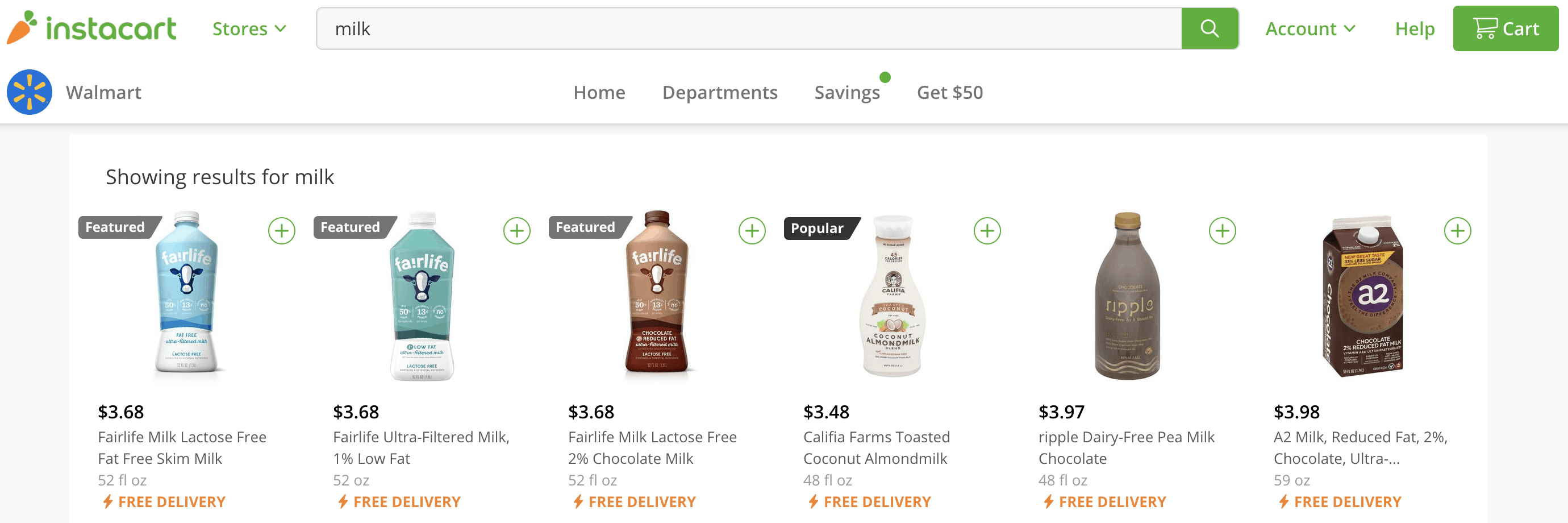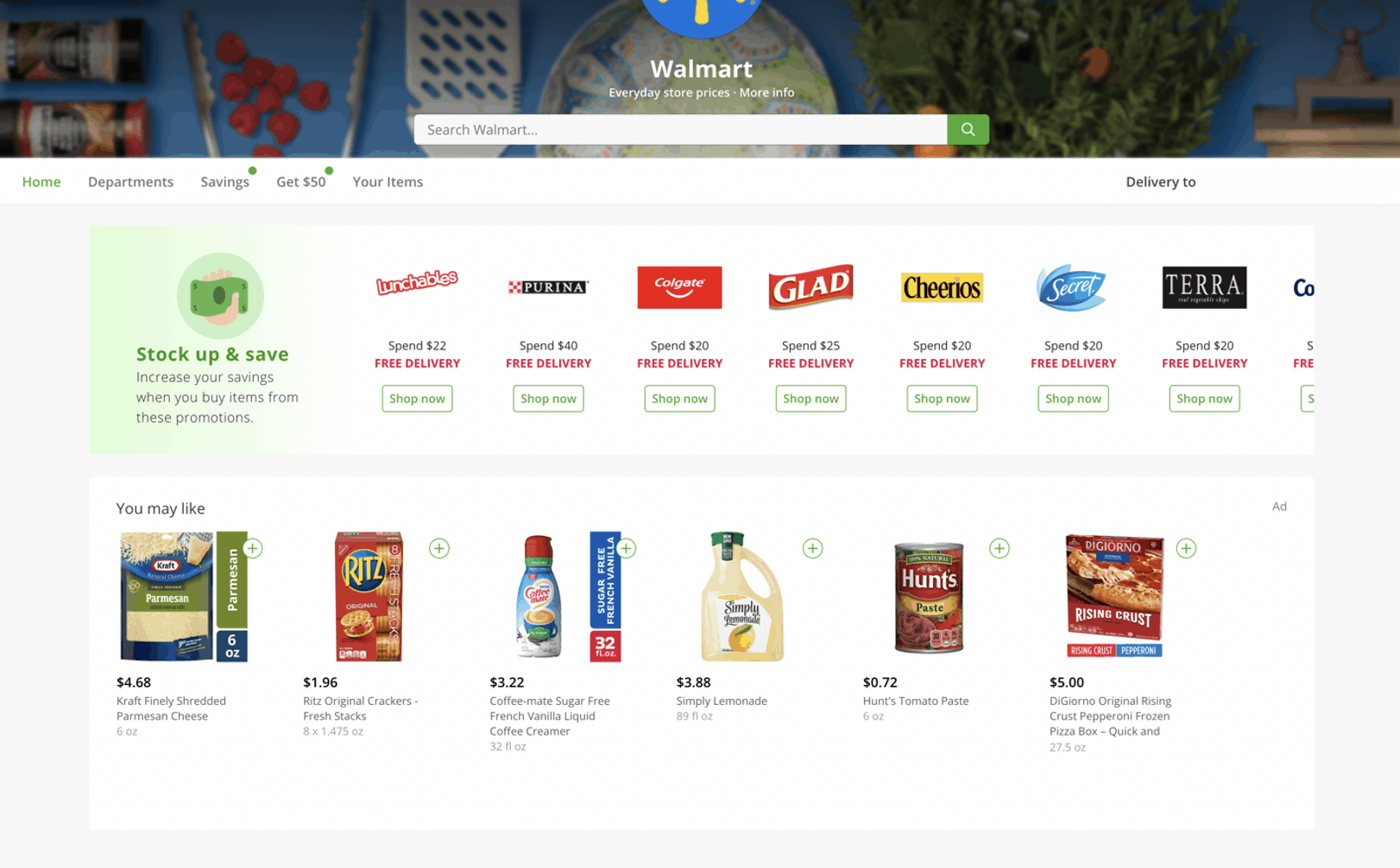Featured Product Ads (Self-Serve): Search and Non-Search Placements
While Instacart offers more than one advertising option, their only self-serve option at the moment is the Featured Product ads. Just like Amazon’s sponsored product ads, Instacart’s Featured Products are shown with the featured tag on them.
These Featured Product ads are an excellent way for you to promote your offers by having them show in areas of high visibility across Instacart. These ads can appear in two main categories or classifications, which are: Search or Non-Search.
Search Featured Ads

For this classification of the category of Featured Product ads they appear in the search results, both within the search results as a shopper navigates down a page or before the searcher’s organic results for the particular search term.
That said, most customers will probably not scroll down if they are on a search page, as research shows that about 80% of all purchases are made from the top 1 to 3 products on the results page for a search term.
This makes search ads very powerful, as not only do they help amplify your brand’s visibility but also capture both new and old customers for the search terms your ad is showing for.
Non-Search Featured Ads
These non-search ads show up in various places across Instacart. But primarily whenever a customer is looking at products but hasn’t typed in a keyword to search they are likely to view non-search advertisements.
This advertisement type helps ensure a broader visibility spectrum for your offers across the Instacart marketplace and isn’t just restricted to specific search keywords.
Here are the 4 types of placements that you can expect your non-search ads to appear: your items, department, the home page, and item details.
Your Items
As a buyer purchases a product on Instacart, the offer will be placed in the customer’s Instacart’s “Your Items” section. The items will show in the shopper’s “Your Items Section” that’s located within the retailer’s page that the item was purchased at, as far as that retailer keeps that SKU.
When a featured ad appears in the “Your Items” section of a particular retailer’s page the goal is to ensure that your brand stays relevant with customers who have bought your products previously as this drives a higher possibility for ensuring brand loyalty and repeat purchases.
Home Page

Just like the Department/Aisle Featured Ads the homepage ads are visible to the customer as soon as they click into (navigate) to a particular retailer on Instacart.
Instacart Managed Advertising
For expert advertisers, Instacart offers access to delivery promotions, coupons, and hero banner ads. For now, these types of ads are available directly only via the Instacart team and they aren’t self-serving, however, that may change soon.\
If this is your preferred option for advertising with Instacart, a representative of the brand will be the best help for more details on how to proceed.
If you’re interested, your Instacart rep will be the best contact to provide more details.
Coupons
When a retailer isn’t offering any coupons for a particular product through Instacart there’s an option to run a coupon directly. Coupons are great for products that tend to drive a huge amount of traffic otherwise such coupons may not be used.
Hero banner

A hero-banner ad runs in a department or aisle at the top of a page. These ads are shown at a fixed cost weekly.
Delivery Promotion
This offers free delivery after buyers pick a quantifiable amount of products.
Note: Be Careful of Product Images
Product images are given to Instacart from sellers directly, which means there is a chance of such visuals being out of date.
So if you discover that any of your visuals are outdated then you need to contact your rep at Instacart who will give you a form to fill out so you can update your images. This process can take up to 48 hours or more so it’s recommended that you do this as quickly as possible.





